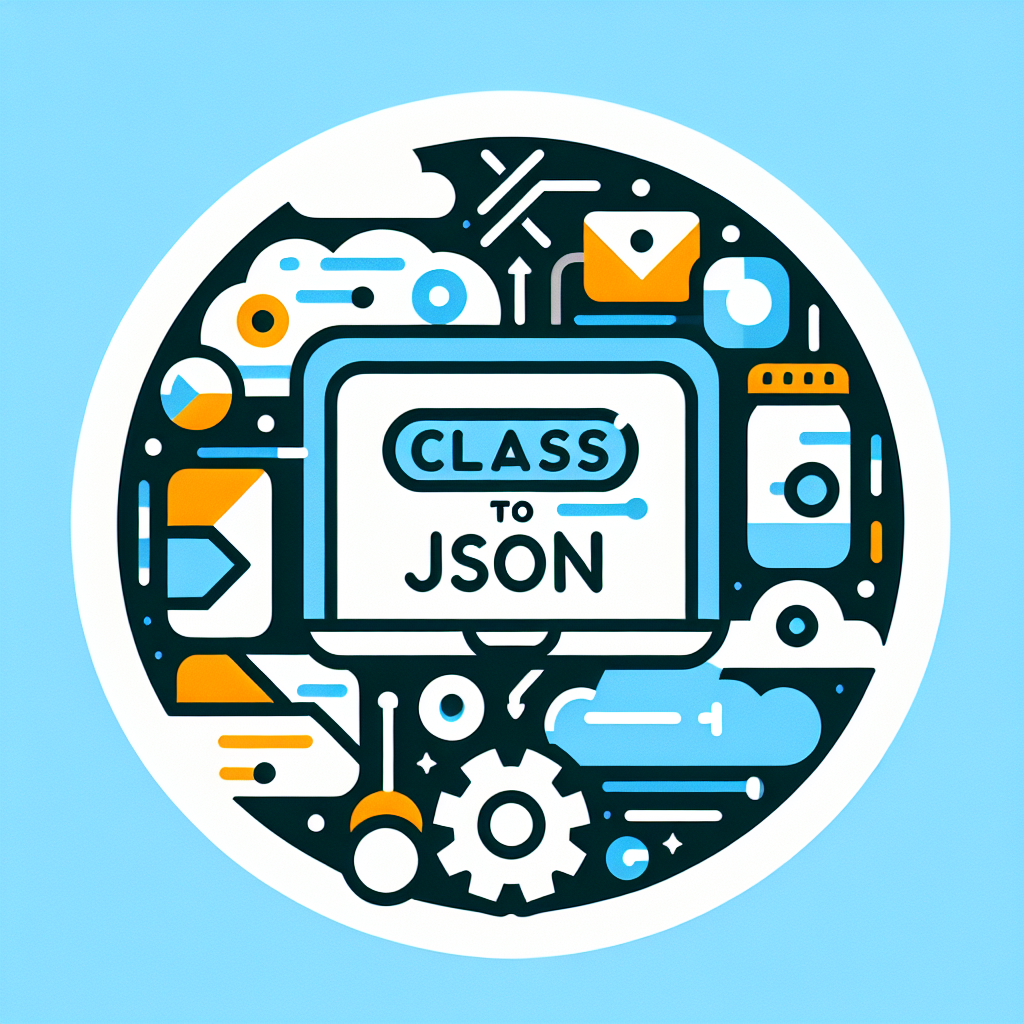Convert Class to JSON Instantly | Free Online Tool
Effortlessly convert class objects to JSON with our intuitive tool. Streamline data serialization, save time, and ensure accuracy with our class-to-JSON converter.
Source Code
Converted Code
Output will appear here...
The Class to JSON tool seamlessly converts programming class structures into JSON format, enhancing data interoperability and simplifying API integrations. Ideal for developers, this tool accelerates data serialization, making it easier to transition complex data models into readable JSON. Boost your coding efficiency and streamline data exchange with this essential converter.

Class to JSON Conversion Tool Link to this section #
Effortlessly transform your data structures with our Class to JSON conversion tool. This utility is designed to simplify the process of serializing class objects to JSON format, ensuring seamless data interchange in web applications, APIs, and more.
Key Features Link to this section #
- Automatic Serialization: Converts class objects to JSON with minimal setup.
- Customizable Output: Supports custom serialization rules for fine-tuned control.
- Language Support: Works with popular programming languages like Python, Java, and C#.
- Preserve Data Integrity: Ensures accurate data representation without loss.
Use Cases Link to this section #
- API Development: Streamline data exchange in RESTful services.
- Configuration Files: Store application settings in a human-readable format.
- Data Persistence: Save and retrieve complex data structures easily.
How It Works Link to this section #
- Define Class: Start by defining your class in the supported language.
- Invoke Conversion: Use the tool to convert the class instance to JSON.
- Retrieve JSON: Obtain a JSON string representation of your data.
Example Code Snippets Link to this section #
Python Link to this section #
import json
class Student:
def __init__(self, name, age):
self.name = name
self.age = age
student = Student("Alice", 23)
json_data = json.dumps(student.__dict__)
print(json_data)
Java Link to this section #
import com.fasterxml.jackson.databind.ObjectMapper;
public class Student {
public String name;
public int age;
}
Student student = new Student();
student.name = "Alice";
student.age = 23;
ObjectMapper mapper = new ObjectMapper();
String jsonData = mapper.writeValueAsString(student);
System.out.println(jsonData);
Resources Link to this section #
Benefits Link to this section #
- Efficiency: Reduce coding time with auto-generated JSON.
- Flexibility: Adapt to diverse data structures and serialization needs.
- Scalability: Support growing data requirements with ease.
Explore the power of seamless class to JSON conversion and enhance your data handling capabilities with our tool. Make data interchange between systems a breeze by transforming complex objects into a universally readable format.
Frequently Asked Questions
What does 'class to JSON' mean?
'Class to JSON' refers to the process of converting an instance of a class (an object) into a JSON format, which is a lightweight data-interchange format that's easy for humans to read and write, and easy for machines to parse and generate.
How can I convert a class instance to JSON in Python?
In Python, you can convert a class instance to JSON by using the `json` module. Typically, you would define a method in your class that returns a dictionary representation of the instance, and then use `json.dumps()` to convert that dictionary to a JSON string.
Why would I need to convert a class to JSON?
Converting a class to JSON can be useful for a variety of reasons, such as transmitting data over a network, storing data in a file, or interfacing with web APIs that require JSON format. It allows for easy data exchange between different systems and programming languages.